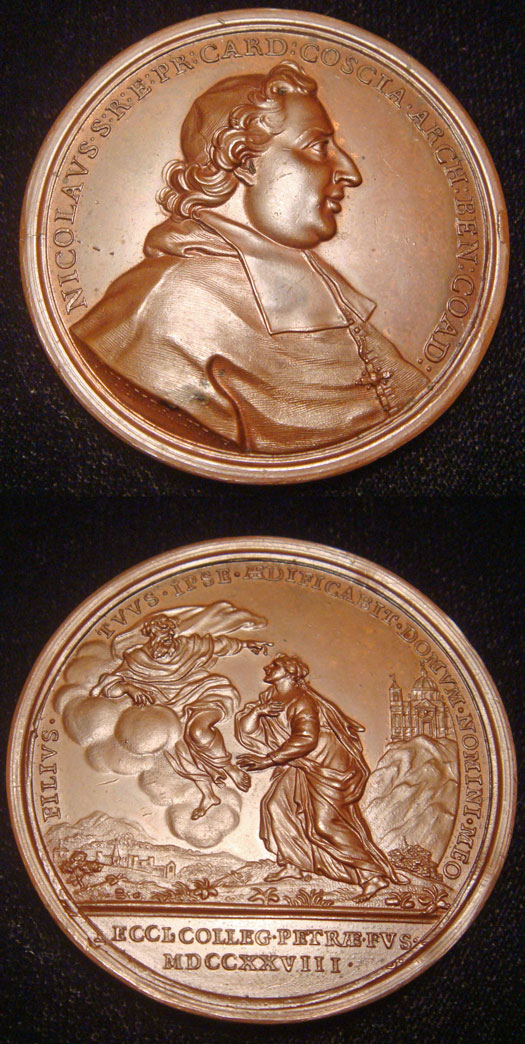Popular Protest in Rome and the Purge of the Benventines in 1730
 Early eighteenth-century Rome was a city increasingly run by place-seekers and appointees of the Church. Officials often had little experience in civic affairs, and the citizens of Rome suffered accordingly. Making matters still worse was the graft and corruption of papal ministries, which had reached its apogee under the aging Benedict XIII. Benedict XIII’s segretario dei Memoriali, Cardinal Nicolò Coscia, Archbishop of Benevento, led a faction known as “i beneventani.” The Benventines virtually controlled political policy in Rome, taking advantage of the infirmities of the pope. Montesquieu claimed that all the money in Rome went to the Benventines, and that “it is the Benventines who direct his weakness, and, since they are nobodies, they advance nobodies."[1] Simony, bribes, and corruption undermined the trust that the people had in church structures, while their control over taxes led to severe economic discrepancies.
Early eighteenth-century Rome was a city increasingly run by place-seekers and appointees of the Church. Officials often had little experience in civic affairs, and the citizens of Rome suffered accordingly. Making matters still worse was the graft and corruption of papal ministries, which had reached its apogee under the aging Benedict XIII. Benedict XIII’s segretario dei Memoriali, Cardinal Nicolò Coscia, Archbishop of Benevento, led a faction known as “i beneventani.” The Benventines virtually controlled political policy in Rome, taking advantage of the infirmities of the pope. Montesquieu claimed that all the money in Rome went to the Benventines, and that “it is the Benventines who direct his weakness, and, since they are nobodies, they advance nobodies."[1] Simony, bribes, and corruption undermined the trust that the people had in church structures, while their control over taxes led to severe economic discrepancies.
The people of Rome were well aware that they suffered injustices because of the exploitation of the "beneventani." So, when the pope's death led to the Camerlengo, Cardinal Annibale Albani, and the College of Cardinals to purge the Benventine faction on 23 February 1730, a riot ensued. A crowd tried to capture two men in Coscia's circle who were to be charged for corruption -- Abbot Ramoni, the tax farmer who collected duties on fish, and Valeo Loiali, Coscia's Household Steward. Ramoni and Loialli's carriage was attacked by people who reportedly wished to burn them alive. Unable to capture them, the rioters began a general assault on the Benventines.
Vincent Rosta, the tax farmer who collected duties on provisions and who authored the tax on flesh-meat, as well as the tax farmer of soap duties had their houses attacked. Guards were able to repel the latter attack, but Rosta’s house had all of its windows broken. Meanwhile, Coscia took haven in the palazzo of Marchese Abbati. Stone throwers found him there and broke all of Abbati’s windows, harassing his servants whom they were recognized on the street. The crowd even attacked the stables of M. Carmine, a Bricklayer in the Benevento, killing his horse and breaking his chaise.[2] The violence led to at least one death, a servant whom the guards shot. The Roman leaders recognized the popular calls for reform let loose by Albani’s purge of the Beneventines. Within weeks, the government ended the soap tax and began addressing more substantive internal reforms.
[1] Charles de Secondat, Baron de Montesquieu, Voyages de Montesquieu, vol. 1 (Paris, 1844), 199-200: "ce sont les Bénéventins qui dirigent sa faiblesse, et, comme ils sont gens de néant, ils avancent le gens de néant."
[2] "Foreign Affairs," Monthly Chronicle (London), March 1730; Daily Post (London), no. 3273, 17 March 1730; Daily Journal (London), no. 2871, 20 March 1730; Freiherr von Pastor Ludwig, The history of the popes, from the close of the middle ages drawn from the secret Archives of the Vatican and other original sources, vol. 34 (London: Keegan Paul, Trench, Trubner, & Co.), 301-2.
